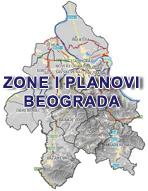1000x Landscape Architecture – Book Review
1000x Landscape Architecture – Book Review
http://landarchs.com/1000x-landscape-architecture-book-review/
A review of 1000x Landscape Architecture by Braun Publishing AG (COR).
Enclosed within this book are 1,000 pages playing host to 1,000 examples of contemporary landscape architectural work, the majority of which were created in the last decade or two. The first edition of the book was published in 2009 and this, the second edition, in 2010; bear this in mind if you are an enthusiast looking for the discipline’s most recent projects worldwide, as anything designed or built post-2010 isn’t included.
Structure and Content of 1000x Landscape Architecture
Upon receiving the book, the first thing that struck me was its colossal size – 1,000 pages of content at roughly 10″ x 13″ in size really adds up. The first body of text to greet the reader is a two-page preface complemented by a diagrammatic world map. The map provides a visual reference for the continents of the world in which the subsequent designs are located. The continents, five in total, are Australia, Africa, the Americas, Europe, and Asia.
The authors immediately acknowledge that works of landscape architecture encompass a variety of scales — from small, intimate gardens to expansive environs on a geographical scale, and also briefly discuss the unalike values assigned to the sector throughout various cultures. The content of the book, however, generally centres on the typologies of parks and gardens. These are complemented by multifarious other landscape types, such as land art, waterfronts, and memorials.
Perusing conventional parks and gardens is an enjoyable experience, but with the profession’s panoply of projects worldwide — both built and unrealized — I am curious as to why a concentrated typological stance was taken. The authors pronounce landscape architecture as a field of specialization that operates across broad scales, yet possibly limit the book’s potential by not embracing all instances of landscape.
Each verdurous color-coded continental slice of the book commences with a contents page containing the countries and their respective cities and/or towns the designs are located within.
Every project is furnished a single page spread and is explained through a passage of text ranging from 100 to 150 words in length, succinctly defining the design rationale and narrative. Text is supported by a series of appealing images, ranging from concept sketches, plans, sections, perspectives, and details through to mid- and post-construction photography.
The categorizing of each project is performed through a series of descriptors set vertically on the outer edge of each page. From bottom to top, they read: landscaping; other creatives; client; completion; typology; region; country; and city. The latter three are bannered in the shade of green corresponding to the world map diagram. This also gives a nice-looking visual touch along the book’s fore edge.
If I were to be querulous of any minutiae, it would be that at times I found the classifying of typologies for numerous projects to be overtly ambiguous. To classify one park as an “open space”, another as a “leisure park”, another as a “recreational area”, and another simply as “greening” seemed inconsistent and somewhat indolent, and were not just limited to parks.
Other book reviews you may be interested in:
- Landscape and Urban Design for Health and Well-Being
- Digital Drawing for Landscape Architecture
- 10 Books to Read in Your Fourth Year of Landscape Architecture
Another incongruity, although minor, but that alerted my attention nonetheless, was the erroneous sequencing of projects by city when checking against the contents pages, and the omitting of city names in the contents page that featured in the book. I picked up on this in the Australian section (as I am an Australian).
So Why Should I Choose This Book?
The beauty of this book is the sheer volume of landscape architectural work that it showcases. It facilitates a depth of knowledge into the profession’s built work around the world through a series of continental cultural lenses. I believe the text to be perfect for design inspiration and research, be it for a student or as part of a professional practices library. Searching for precedents is both an enjoyable and sometimes challenging experience, with the most difficult part often being where to embark on the search — 1000 x Landscape Architecture bridges that gap.



Коментари
Постави коментар
Ovde možete ostaviti vaš komentar i sugestije